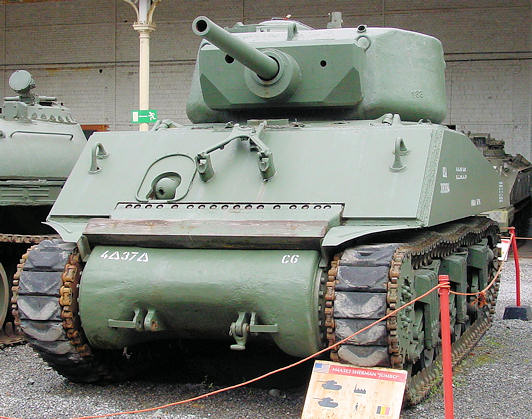CHAPTER V
The German Counterattack
On Saturday, 2 December, just before dawn, the 1st battalion, 963rd German Infantry Regiment infiltrated through the front lines between the 2nd and 3rd battalions of the 22nd Regiment. Their objective, as later ascertained by G-2, was to recapture GROSSHAU. Initially their tactics were successful and they penetrated the front lines to a depth of about 500 yards. The armored task force was called forward immediately to assist in the American counterattack. As the tanks and destroyers advanced, they encountered the enemy but did not realize it until bazooka teams began to attack them. Confusion reigned for several minutes while one tank was knocked out and burned and another damaged by bazooka fire. Another tank was set afire, and except for one man the crew bailed out. The remaining crewman put out the fire and drove back to GROSSHAU, loaded another crew, and started back toward the fight. Meanwhile the infantry organized and together with the tanks systematically set out to destroy the enemy. By 1400 hours all the attackers had been destroyed or captured. The front was reestablished and the armor moved back to a position southwest of GROSSHAU where they were re-supplied.
During this action several infantrymen including two company commanders were captured by the Germans and were taken to a farmhouse approximately 500 yards in front of the American lines. While the lines were being reorganized, a platoon of infantry moved out to the farmhouse, captured the German guards, and released the Americans without a fight.
Throughout the remainder of the day, the front lines of the 4th Division took a pounding from artillery and mortar fire. One small enemy counterattack in the sector of the 12th Regiment was turned back; the entire front held and remained alerted for possible enemy action during the night.
On the next day the armored task force moved to an assembly area on the high ground northeast of GROSSHAU where it could act as a mobile reserve to repel any hostile action in the regimental sector. No counterattack occurred but the tanks were subjected to sporadic artillery fire ail day. The task force held its position until 1900 when the 22nd Regiment was relieved in place by the 330th Infantry Regiment of the 83rd Infantry Division. Crews from the 744th Tank Battalion (attached to the 83rd Division) took over three tanks of Company C, 70th, in position on an exchange basis. These tanks were considered to be better adapted to woods fighting, having reinforced armor and mounting short barreled guns. These were M4A3E2 medium tanks and with their shorter barrels 360 degree traverse could be obtained without the guns striking trees.

M4A3E2 SHERMAN JUMBO
After drawing back from the front, Company C, 709th Tank Battalion, and Company C, 803rd TD Battalion, were relieved from attachment and reverted to their own battalion control.
On Tuesday, 5 December, Company C of the 70th was ordered to move to MONDORF, LUXEMBOURG, and Company C, 803rd also moved to MONDORF on this date. The other companies of the tank and TD battalion were still attached to their respective regiments which had established defensive positions all along the division front, artillery fire was the only action to be found along the front of the 4th Division. The entire division was relieved by 12 December by the 83rd Infantry Division, and moved to LUXEMBOURG.

